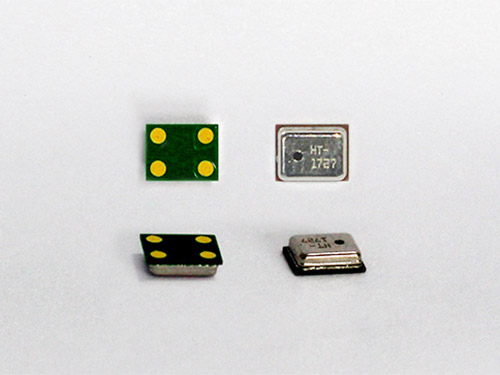Welcome to Dongguan Huaze Electronic Technology Co., Ltd. official website
- +86-769-87900688
- Chinese
WeChat

Welcome to Dongguan Huaze Electronic Technology Co., Ltd. official website


Omnidirectional electret microphones Magnetic, ceramic and electret microphones are all omnidirectional microphone microphones, which accept sounds from all directions equally. At present, electret microphones are widely used in the field of acoustics. It is made of an insulating, highly polarized material. When the sound enters the microphone, the density change of the sound wave causes the negatively charged thin metal diaphragm to vibrate, and then the sound energy is converted into mechanical energy. The diaphragm vibration generates pressure on the electret body and transmits it to the back plate of the electret. Both the back plate of the electret and the bottom of the diaphragm are connected to the field effect transistor preamplifier and have a terminal leading to the outside. When the microphone diaphragm vibrates, the distance and space between the diaphragm and the back plate of the electret change, and a voltage is generated. The field effect transistor fixed on the microphone converts the mechanical energy into electrical energy, and then transmits it to the amplifier through the terminal. The electret microphone has a wide frequency response, high sensitivity and durability, and the diaphragm is its most moving part.
Directional microphones are classified according to the form of polarity, and are much more sensitive to the sound from the front than the sound from the back. The directional microphone has two openings at both ends of the diaphragm, one on each side. The vibration of the diaphragm depends on the phase relationship and the pressure difference between the two ends. A fine acoustic filter is placed at the front end of the rear sound hole to act as a time delay, so that the sound from the rear can reach the diaphragm from the front and rear sound holes at the same time and cancel it out, so the polar pattern of the directional microphone is in the shape of a heart. .
Heart-shaped pointing
This kind of direction is named after its pickup range is very similar to a heart: in front of the microphone, its sensitivity to audio signals is very high; and to the side of the microphone (at 90 degrees), its sensitivity is also Not bad, but 6 decibels lower than the front; *, it has a very good shielding effect for the sound from the back of the microphone. It is precisely because of this shielding effect on the sound behind the microphone that the cardioid pointing microphone is very useful in multiple recording environments, especially when a large amount of indoor ambient sound needs to be eliminated. In addition, this microphone can also be used for live performances, because its shielding function can cut off the echo and environmental noise generated during the performance. In practice, cardioid microphones are also one of the most frequently used microphones, but remember that like all non-omnidirectional microphones, cardioid microphones will also show a very obvious proximity effect.

Super heart-shaped pointing
This type of pointing is very similar to the over-cardioid, and is often confused. However, the general super-cardioid has slightly worse directivity than the over-cardioid, and it is sensitive to the sound from the back of the microphone. It's also much smaller.
Pointing over the heart shape
This type of pointing is very similar to the concentric and supercardioid, because they are very sensitive to the sound in front of the microphone. However, their * sensitivity is different. For example, the cardioid direction is directly behind the microphone, the supercardioid is at 200 to 210 degrees, and the overcardioid is at 150 to 160 degrees. That's why the directivity of the over-cardioid microphone is better than that of the cardioid and super-cardioid microphones. In practice, this kind of over-cardioid microphone is mostly used in recording environments that require maximum isolation of the sound source.
omnidirectional pointing
This type of pointing microphone, as the name suggests, is equally sensitive to audio signals from all directions around the microphone. The first advantage of this microphone is that it does not produce significant proximity effects.
8-shaped pointing
Sometimes, it is also called bidirectional, because this type of directional microphone has the same high sensitivity to audio signals from directly in front of and behind the microphone, but it is not very sensitive to signals from the side of the microphone. In this way, the sound pickup range is shown on the drawing, which looks like a figure eight, and the position of the microphone is exactly at the cut-off point of the figure eight, hence the name.
+86-769-87900688
Address:Building B, No. 6, Xingyuan Road, Yuquan Industrial Zone, Fenggang Town, Dongguan City


Mobile station
No public
Applets